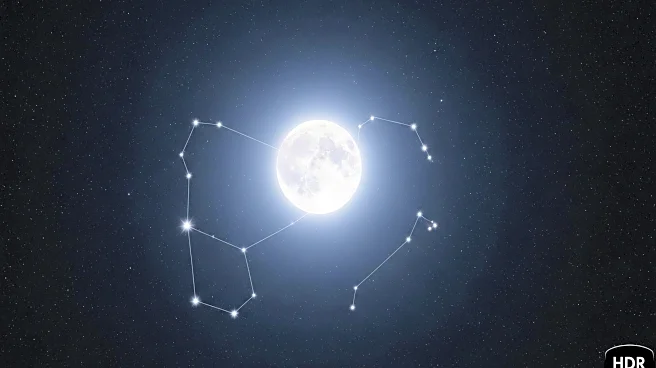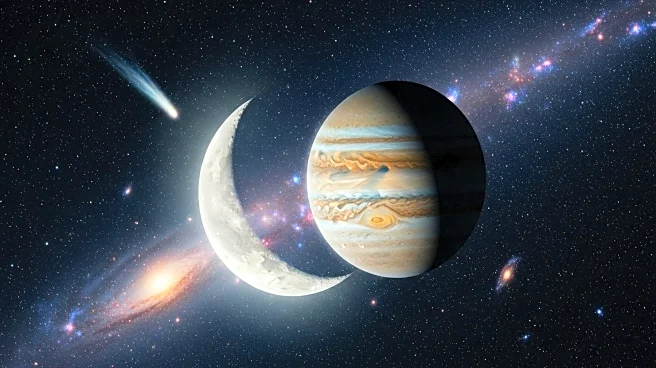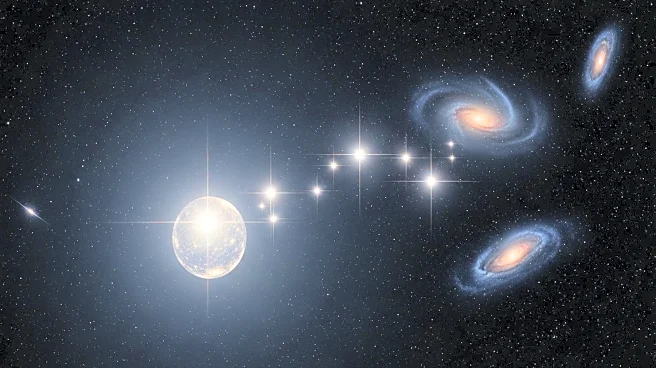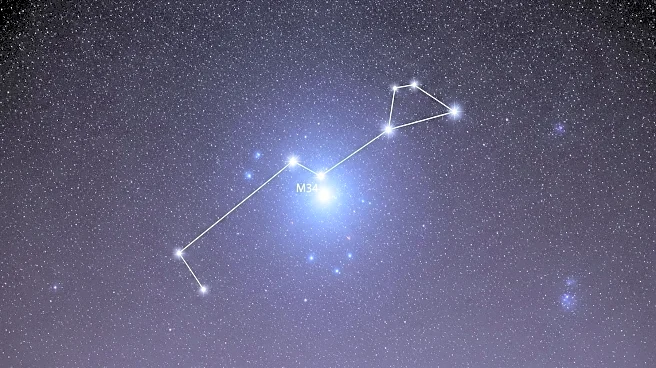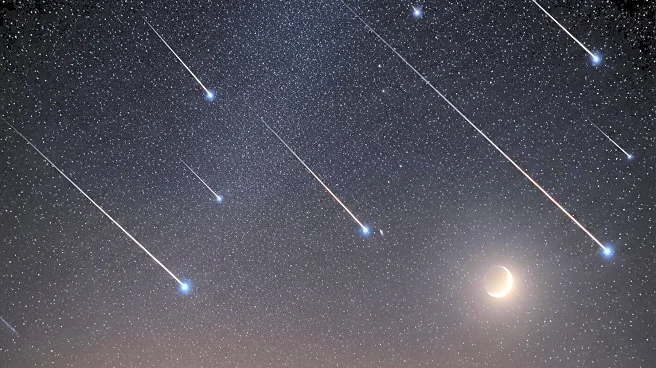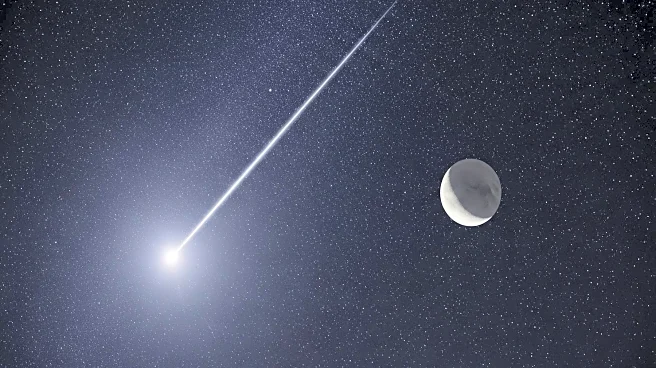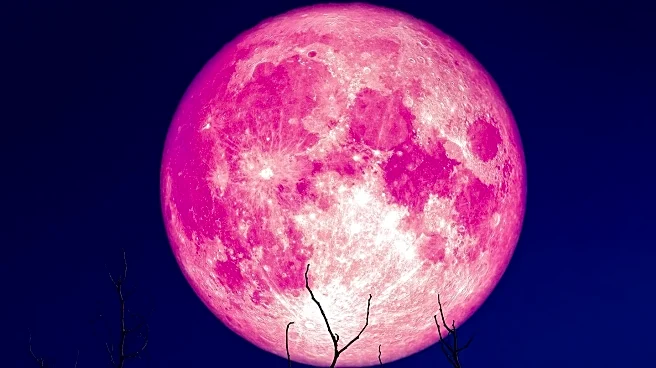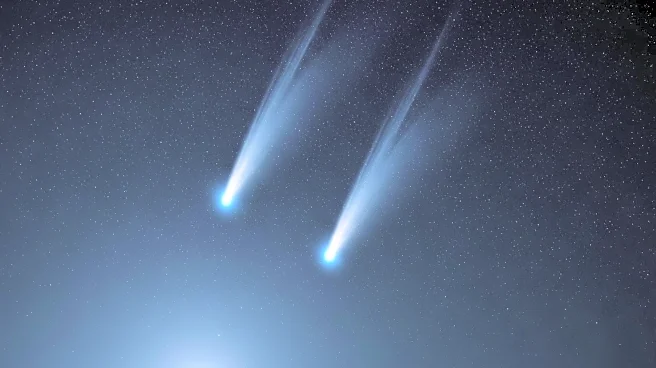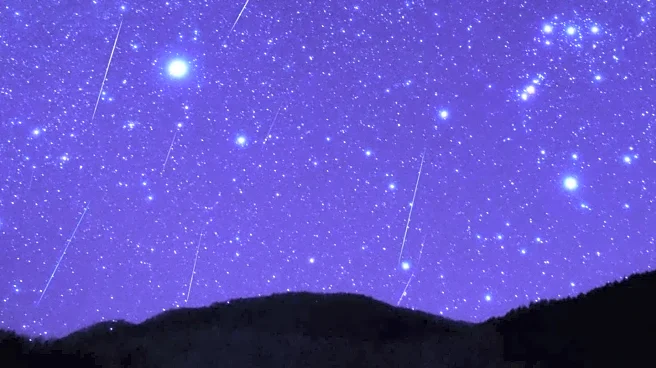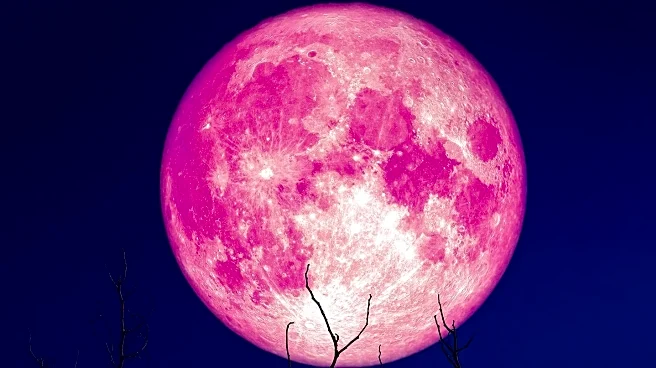What's Happening?
Astronomy Magazine highlights the visibility of Ceres in Cetus, providing guidance for its observation near the star Phi2 Ceti. The article details the best viewing times and conditions for spotting Ceres, which is visible at magnitude 7.6. Additionally, the magazine covers the transit of Jupiter's moons Io and Europa, offering opportunities for observation in the early morning hours of October 11. The guide provides detailed information on the positions and movements of celestial bodies, aiding enthusiasts in their observations.
Why It's Important?
Observing celestial bodies like Ceres and Jupiter's moons offers valuable opportunities for amateur astronomers to engage with the night sky and contribute to scientific knowledge. These observations enhance public interest in astronomy and provide educational moments that promote awareness of astronomical cycles and the dynamics of our solar system. The detailed guide helps enthusiasts plan their observations, fostering a deeper appreciation for the universe and its wonders.
What's Next?
The magazine suggests continued observation of Ceres as it remains close to Phi2 Ceti, offering opportunities for viewing in the coming days. The transit of Jupiter's moons will repeat on October 18, providing another chance for observation, particularly for those in the western U.S. The guide encourages readers to revisit these celestial regions when conditions are optimal for viewing.
Beyond the Headlines
The article touches on the broader implications of these observations, such as the role of amateur astronomers in contributing to scientific knowledge through their observations. It highlights the cultural significance of celestial events in inspiring curiosity and wonder about the universe. The guide also underscores the importance of dark skies and the impact of light pollution on astronomical observations.

